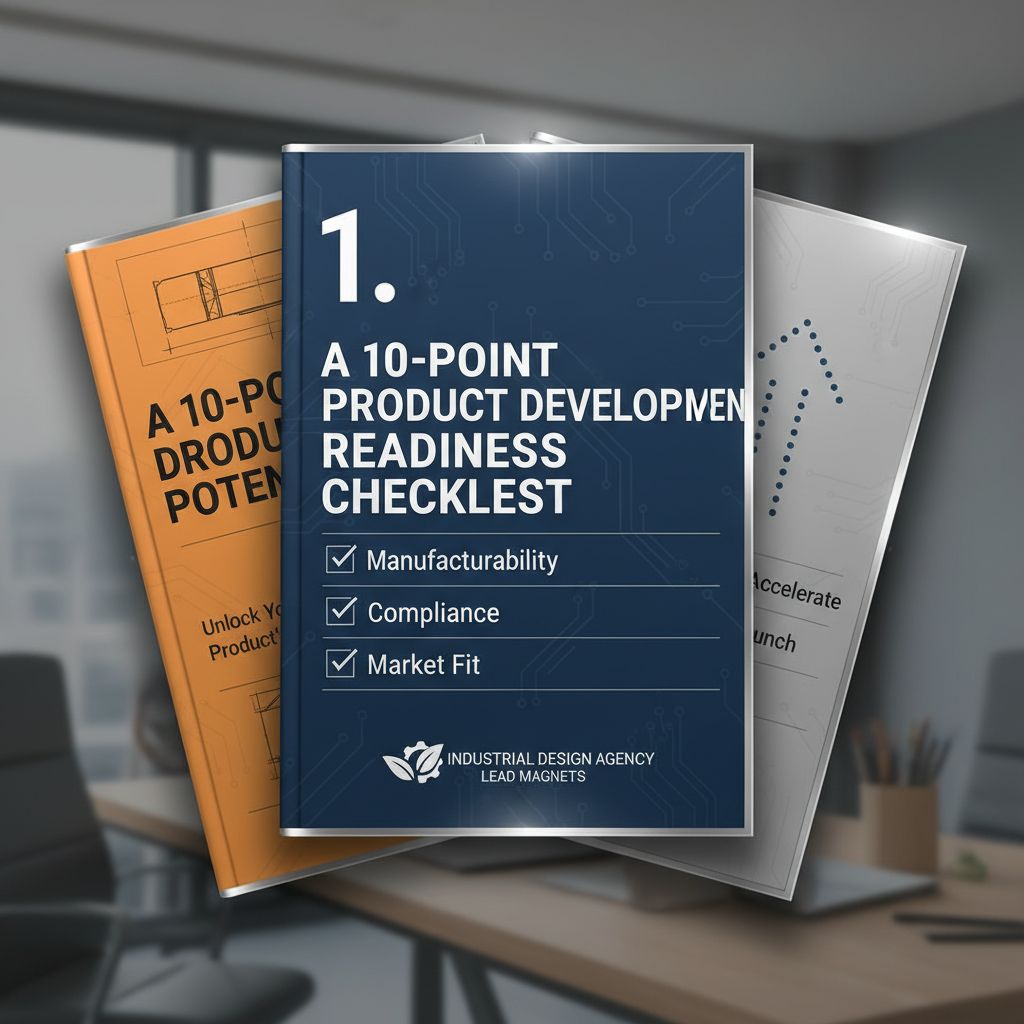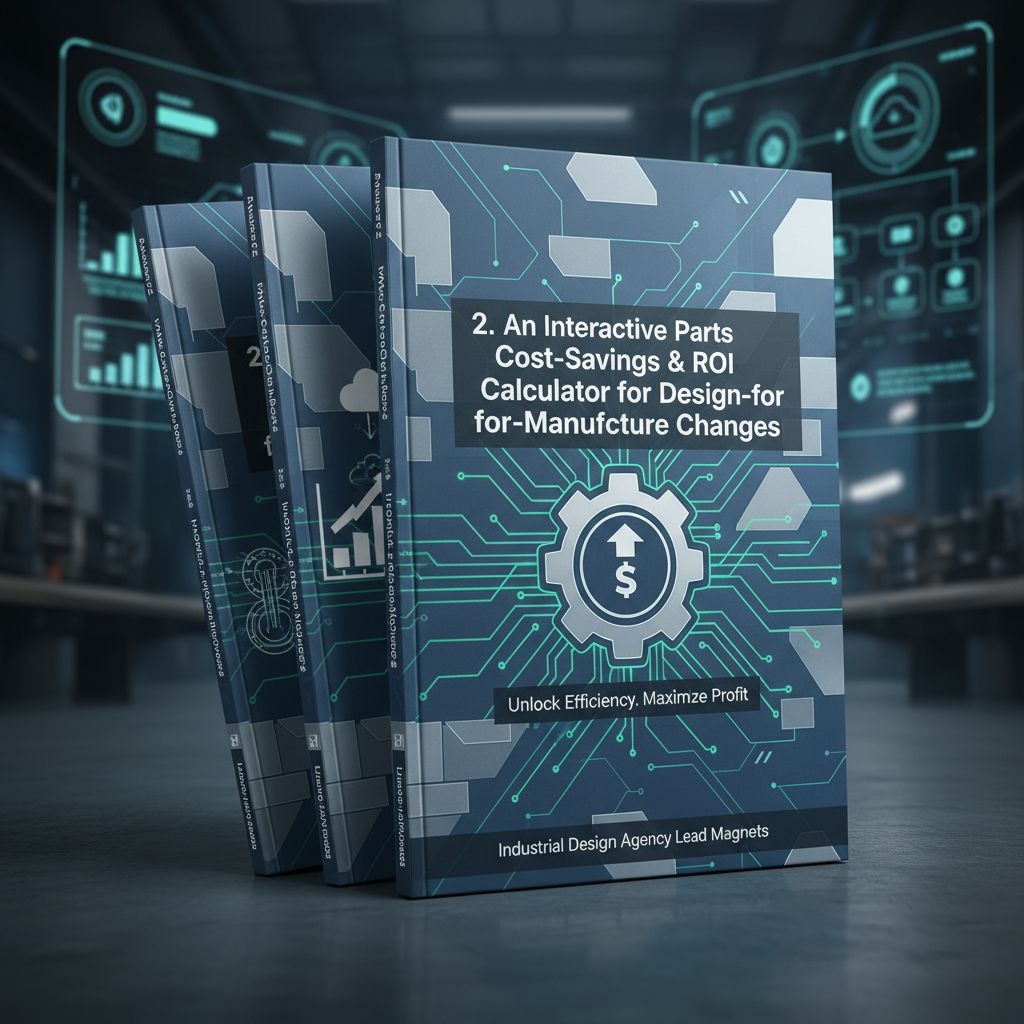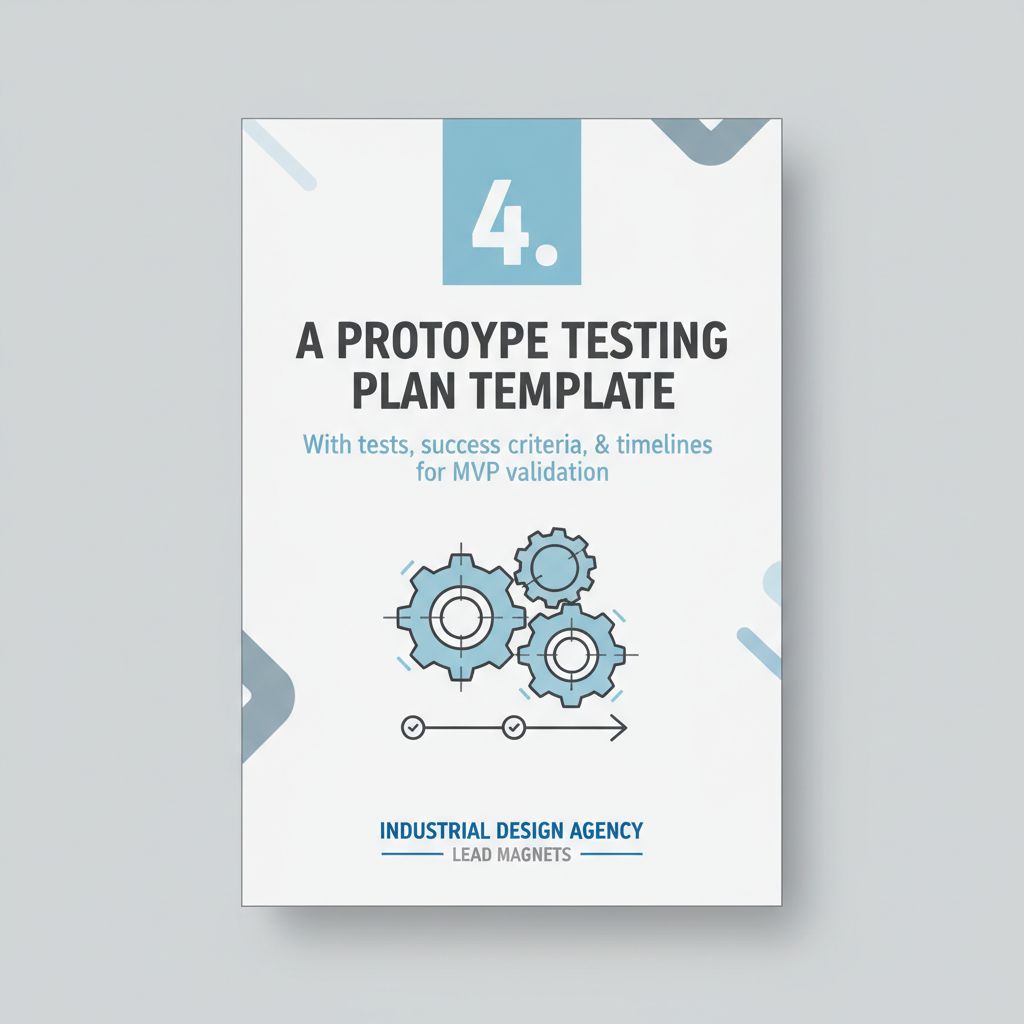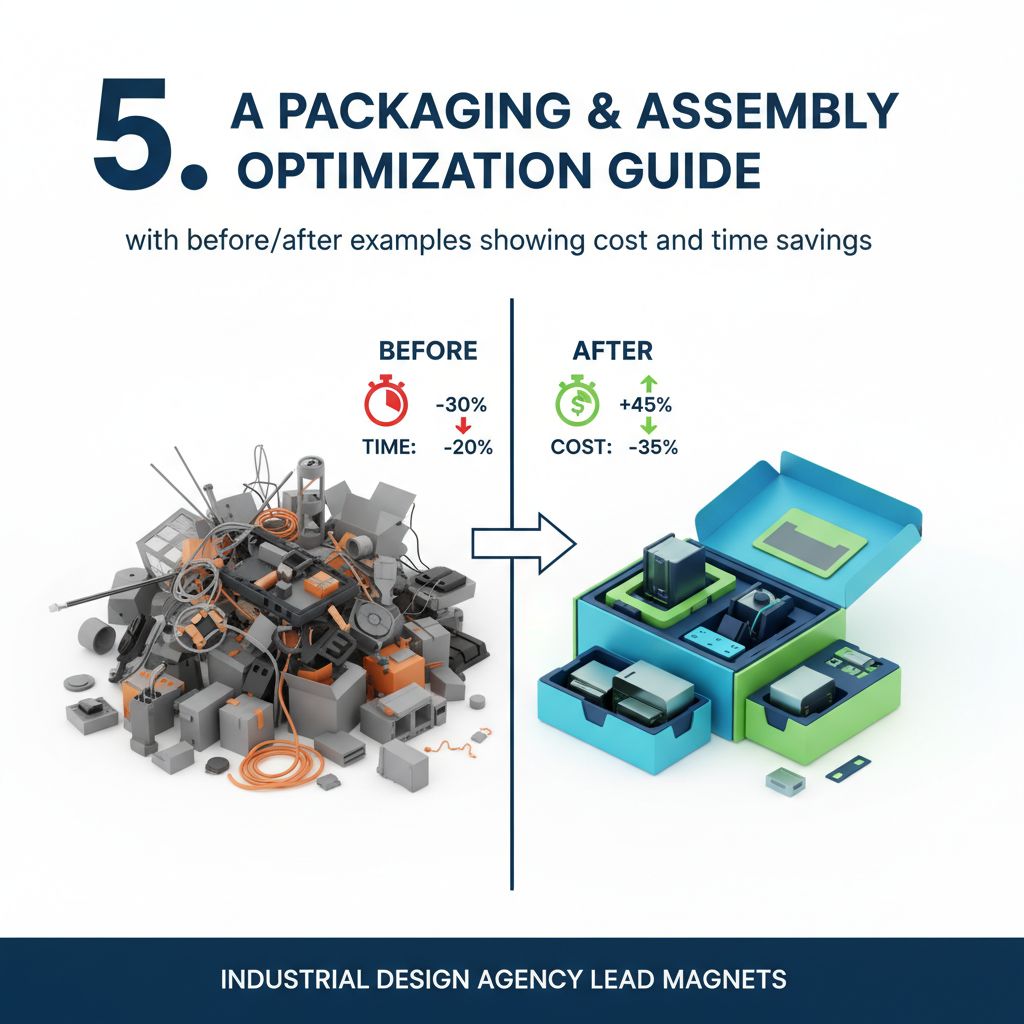
Getting Clients Hooked: 5 Killer Industrial Design Agency Lead Magnets That Actually Convert
If you’re running an industrial design agency and struggling to fill your pipeline with qualified leads, you’re probably tired of the same old “download our brochure” approach that gets buried in prospects’ email folders. The truth is, potential clients don’t want another generic PDF about your services – they want immediate value that helps solve their actual problems right now. That’s where smart industrial design agency lead magnets come into play.
The best lead magnets for design agencies aren’t flashy portfolios or case studies (though those have their place). Instead, they’re practical tools that demonstrate your expertise while giving prospects a taste of the strategic thinking they’d get by working with you. We’re talking about resources that product managers, engineers, and startup founders can use immediately to make better decisions, save money, or avoid costly mistakes. Ready to see five lead magnet ideas that’ll have potential clients raising their hands and asking for more? Let’s dive in.
1. A 10-point Product Development Readiness Checklist to assess manufacturability, compliance, and market fit.

Why use this lead magnet?
As an industrial design agency, you’re constantly competing for clients who often don’t fully understand what goes into bringing a product from concept to market. That’s where a “10-point Product Development Readiness Checklist” becomes your secret weapon for lead generation. This type of lead magnet positions you as the expert who can save potential clients from costly mistakes before they even happen. When entrepreneurs and product managers download your checklist, they’re essentially raising their hand and saying “I need help navigating this complex process” – which is exactly the mindset you want them in when they’re ready to hire an agency.
The beauty of this particular lead magnet is that it works on multiple levels for your business. First, it attracts qualified leads who are serious about product development (not just dreamers with napkin sketches). Second, it educates your prospects about the complexity of what you do, helping justify your fees before you even get on a sales call. And finally, it gives you valuable insight into where each lead is in their development process, allowing you to tailor your follow-up accordingly. Whether someone scores high and needs advanced manufacturing guidance or scores low and needs fundamental design strategy, you’ll know exactly how to position your services to meet their specific needs.
2. An interactive Parts Cost-Savings & ROI Calculator for design-for-manufacture changes.

Why use this lead magnet?
If you’re running an industrial design agency, you know that potential clients often struggle to see the real value of design-for-manufacture changes until it’s too late. They get stuck on upfront costs and can’t visualize how smart design decisions early on will save them serious money down the road. That’s where an interactive Parts Cost-Savings & ROI Calculator becomes your secret weapon. This tool transforms abstract benefits into concrete numbers that speak directly to your prospects’ bottom line. Instead of explaining theoretical savings, you’re showing them exactly how much they’ll save on material costs, tooling expenses, and production time with your design expertise.
The beauty of this calculator is that it does double duty for your marketing efforts. First, it positions you as the data-driven expert who understands the financial side of manufacturing – not just someone who makes things look pretty. Second, it’s the perfect lead magnet that practically sells itself. Business owners and product managers can’t resist plugging in their numbers to see potential savings, and once they see those results, they’re already mentally invested in working with you. Plus, you’ll capture their contact information while they’re genuinely excited about the value you can provide, making your follow-up conversations much warmer and more productive than cold outreach ever could be.
3. A Materials Selection Cheat Sheet mapping common materials to cost, durability, and sustainability trade-offs.

Why use this lead magnet?
When potential clients are evaluating industrial design agencies, they’re not just looking for pretty sketches and flashy portfolios – they want partners who understand the nitty-gritty details that make or break a product’s success. A materials selection cheat sheet that maps out cost, durability, and sustainability trade-offs hits the sweet spot of demonstrating your technical expertise while solving a real pain point for your prospects. Product managers, engineers, and startup founders are constantly wrestling with material decisions, often spending hours researching options or making costly mistakes because they don’t have the specialized knowledge that comes from years of design experience.
This type of lead magnet works brilliantly because it positions your agency as the knowledgeable guide rather than just another vendor pitching services. When someone downloads your materials cheat sheet, they’re essentially raising their hand and saying “I have a product development challenge” – which makes them a highly qualified lead. Plus, every time they reference your cheat sheet during their project (and trust me, they will), your agency name is right there, keeping you top-of-mind when they’re ready to hire professional help. It’s the kind of practical, actionable resource that gets shared internally, forwarded to colleagues, and bookmarked for future projects, giving you way more mileage than a typical “download our company brochure” approach.
4. A Prototype Testing Plan Template with tests, success criteria, and timelines for MVP validation.

Why use this lead magnet?
Why Your Industrial Design Agency Needs a Prototype Testing Plan Template
If you’re running an industrial design agency, you know that half the battle is convincing potential clients that you actually know what you’re doing when it comes to validating their product ideas. A solid prototype testing plan template isn’t just a nice-to-have document – it’s your secret weapon for showing prospects that you’ve got a systematic, professional approach to turning their concepts into market-ready products. When you can whip out a detailed testing framework complete with success criteria and realistic timelines, you’re not just another design shop throwing around pretty sketches. You’re positioning yourself as the strategic partner who understands that beautiful designs mean nothing if they don’t actually work in the real world.
This template becomes pure gold in your sales process because it addresses the biggest fear every potential client has: “What if this doesn’t work?” Instead of hoping for the best, you’re showing them exactly how you’ll validate their MVP before they sink serious money into production. Plus, having a structured testing plan helps you avoid those awkward conversations later where timelines get blown and budgets spiral out of control. When prospects see that you’ve thought through the testing process from day one, complete with measurable success criteria, they’ll trust you with their project – and probably their bigger budget too. It’s the difference between being seen as a vendor versus being seen as an indispensable partner in their product development journey.
5. A Packaging & Assembly Optimization Guide with before/after examples showing cost and time savings.

Why use this lead magnet?
If you’re running an industrial design agency, you know that prospects often struggle to see the real, tangible value of good design work. They understand pretty aesthetics, but the business impact? That’s where things get fuzzy. A packaging and assembly optimization guide with concrete before/after examples is pure gold because it speaks their language – dollars and cents. When potential clients can see actual cost savings of 30% on materials or assembly time cut in half, suddenly your design services aren’t just a “nice-to-have” but a strategic business investment. These real-world case studies make your expertise immediately credible and help prospects justify your fees to their own stakeholders.
The beauty of this lead magnet is that it attracts the right kind of clients – those who are already thinking about operational efficiency and cost optimization. These aren’t bargain hunters looking for the cheapest designer; they’re serious business decision-makers who understand that smart design pays for itself. Plus, once they download your guide and see those impressive savings numbers, you’ve essentially done half the sales work for you. They’ll come into initial conversations already primed to discuss ROI rather than questioning whether design investment makes sense. It’s the difference between having to convince someone they need what you offer versus having them reach out because they already see the value.




